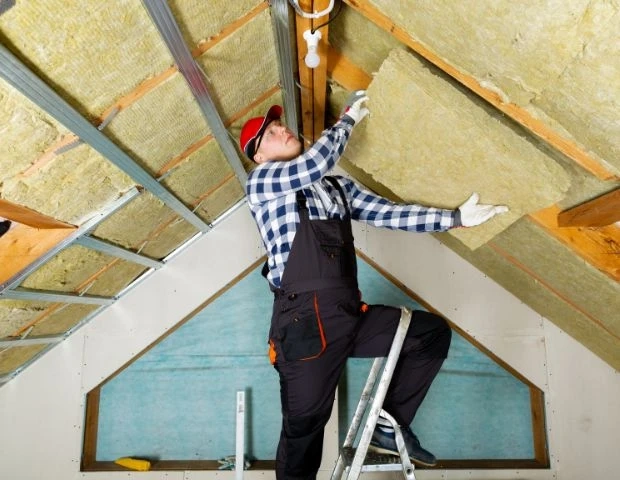In recent years, eco-conscious homeowners have been making a shift toward natural, sustainable building materials. Among these, insulation plays a crucial role in energy efficiency and indoor air quality. Two increasingly popular choices are wool insulation and sheep wool insulation. While they might sound like the same thing, key differences between them can significantly affect your decision when building or renovating an eco-home.
Why Insulation Matters in an Eco-Home
Before we delve into the specifics of wool insulation and sheep wool insulation, it's important to understand why insulation matters so much in an eco-home. Insulation acts as a barrier between indoor and outdoor environments. The better your insulation, the less energy you’ll need to heat or cool your home, which in turn reduces your carbon footprint and energy bills.
Understanding Wool-Based Insulation Materials
Understanding the characteristics and functionality of different types of insulation can make all the difference when trying to create an eco-friendly space. Wool-based insulation is gaining traction for its impressive environmental credentials and functional properties. However, not all wool insulation is created equal. By breaking down the specifics of general wool insulation and comparing it to sheep wool insulation, we can better understand how each functions and where each excels.
What is Wool Insulation?
Wool insulation is a broad term that refers to insulation made from the wool of various animals. It may include sheep wool but can also include fibers from alpacas, goats, and other wool-bearing animals. This type of insulation is processed to remove impurities, treated to resist pests, and formed into batts or rolls for easy installation in walls, ceilings, and floors. The general appeal of wool insulation lies in its natural thermal properties, moisture management, and its ability to filter indoor air contaminants.
How Wool Functions as an Insulator
Before examining the differences in insulation performance, it’s essential to understand how wool works as an insulator. Wool fibers trap air in millions of tiny pockets, slowing down the transfer of heat. This quality makes it effective in keeping homes warm in the winter and cool in the summer. Moreover, wool naturally manages moisture without compromising its insulating ability, a quality that synthetic insulations often lack.
Defining Sheep Wool Insulation
Sheep wool insulation, on the other hand, is a specific type of wool insulation derived exclusively from sheep. It’s considered the most common and commercially available type of wool insulation. Unlike general wool insulation, which can be a blend, sheep wool insulation has a standardized structure that makes it easier to evaluate and compare. It is typically sourced from sustainable farms, processed with minimal chemicals, and offers a consistent texture and performance.
Comparing Thermal Performance and Longevity
To properly assess the performance of wool insulation vs. sheep wool insulation, we need to consider thermal conductivity, moisture control, air quality, and longevity. Wool insulation generally has a slightly higher R-value than sheep wool insulation, depending on the blend of fibers used. However, sheep wool insulation holds its own quite well, often matching or exceeding synthetic alternatives in thermal performance. Sheep wool insulation has the added benefit of being more naturally resilient and elastic, allowing it to retain shape and effectiveness over time.
Evaluating Moisture Resistance
Moisture control is another crucial factor. Wool insulation of all kinds can absorb up to 30% of its weight in moisture without becoming damp. However, sheep wool insulation excels in this department due to its lanolin content, which provides natural water resistance and pest deterrence. This unique feature gives sheep wool insulation a slight edge in environments where humidity and condensation are concerned.
Indoor Air Quality Benefits
Air quality is an underrated but essential part of home insulation. Wool insulation has been shown to absorb volatile organic compounds (VOCs) and other pollutants, improving indoor air quality. Sheep wool insulation shares this property and, in some cases, performs better due to its purity and lack of synthetic additives. Both types are hypoallergenic, making them ideal for families with allergies or respiratory issues.
Durability and Lifespan Differences
Durability and longevity are often overlooked in the insulation conversation. While general wool insulation performs well, sheep wool insulation tends to last longer due to its uniform composition and natural resilience. It springs back into shape after compression, maintains consistent insulation properties, and resists degradation over time.
Ease of Installation
The installation process for both wool and sheep wool insulation is relatively straightforward, especially compared to rigid foam boards or spray foam insulation. These materials are soft, safe to handle without protective gear, and easy to cut and fit into tight spaces. Sheep wool insulation often comes pre-treated with non-toxic pest repellents and fire retardants, making it even easier to install without additional preparation.
Cost Considerations
Cost can be a deciding factor for many homeowners. Wool insulation, depending on the blend, may be less expensive upfront, especially if it incorporates less costly fibers. Sheep wool insulation can be slightly more expensive due to the cost of raw materials and ethical farming practices. However, the higher price tag can be justified by its longevity, low maintenance, and superior performance.
Environmental Impact and Sustainability
From a sustainability standpoint, both wool insulation and sheep wool insulation have excellent environmental credentials. They are renewable, biodegradable, and require less energy to produce than synthetic alternatives. Sheep wool insulation, especially when sourced from organic farms, has an even smaller ecological footprint. It supports ethical farming, reduces waste, and aligns well with the values of green building.
Aesthetics and Material Consistency
When considering aesthetics and tactile feel, sheep wool insulation is often regarded as more refined and consistent. It’s fluffy, easy to manipulate, and visually cleaner, which can be an advantage in open-space applications or areas where insulation might be partially visible. General wool insulation may vary more in texture and color, depending on the animal sources and processing techniques.
Importance of Certifications
One area where sheep wool insulation shines is its availability of third-party certifications. Products like Havelock wool insulation are certified for performance, sustainability, and safety, giving homeowners confidence in their purchase. Certifications ensure that the product meets rigorous standards and provides accountability for environmental claims. General wool insulation may also be certified, but the scope and consistency of those certifications can vary significantly.
Which One Should You Choose?
So, which is best for your eco-home? If the budget is tight and you’re looking for a natural, effective insulator, wool insulation may be a better option. Its diverse fiber content allows for cost flexibility while still offering solid performance. However, if you prioritize sustainability, moisture resistance, and long-term durability, sheep wool insulation stands out as the superior choice. It delivers exceptional insulation while aligning closely with the values of eco-conscious living.
Ultimately, both materials outperform traditional insulation in ways that matter most—energy savings, indoor air quality, and environmental impact. Choosing between them comes down to your specific needs, budget, and sustainability goals. Whichever you choose, integrating natural wool-based insulation into your home is a powerful step toward greener, healthier living.


